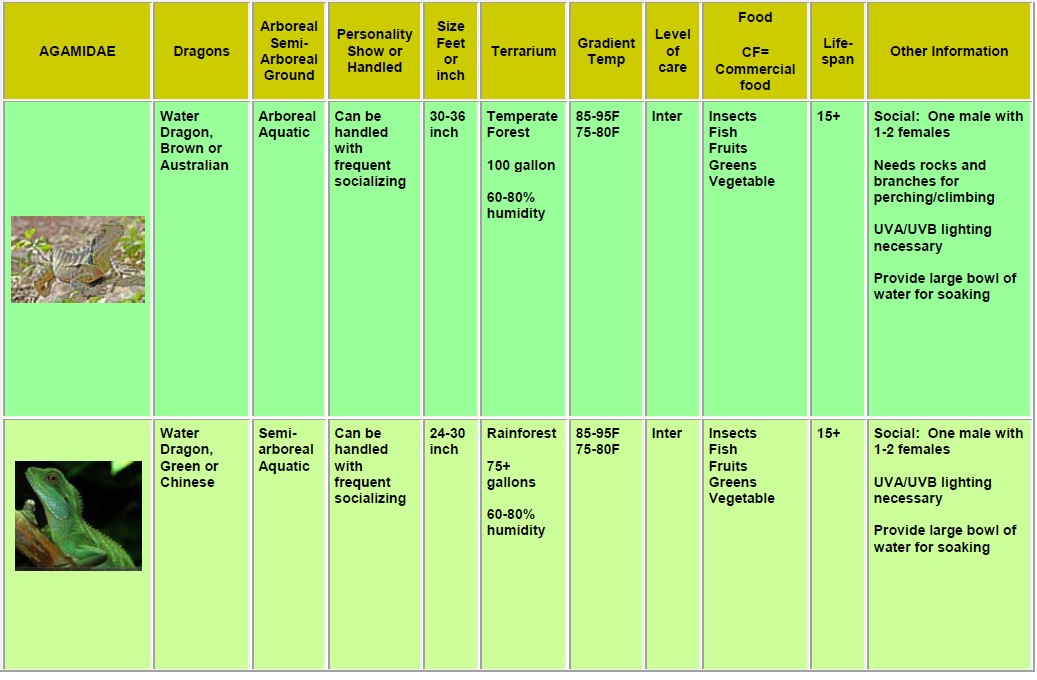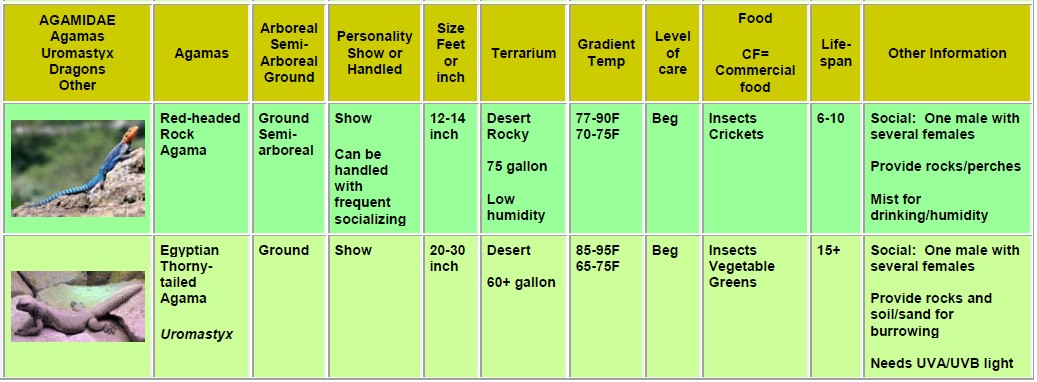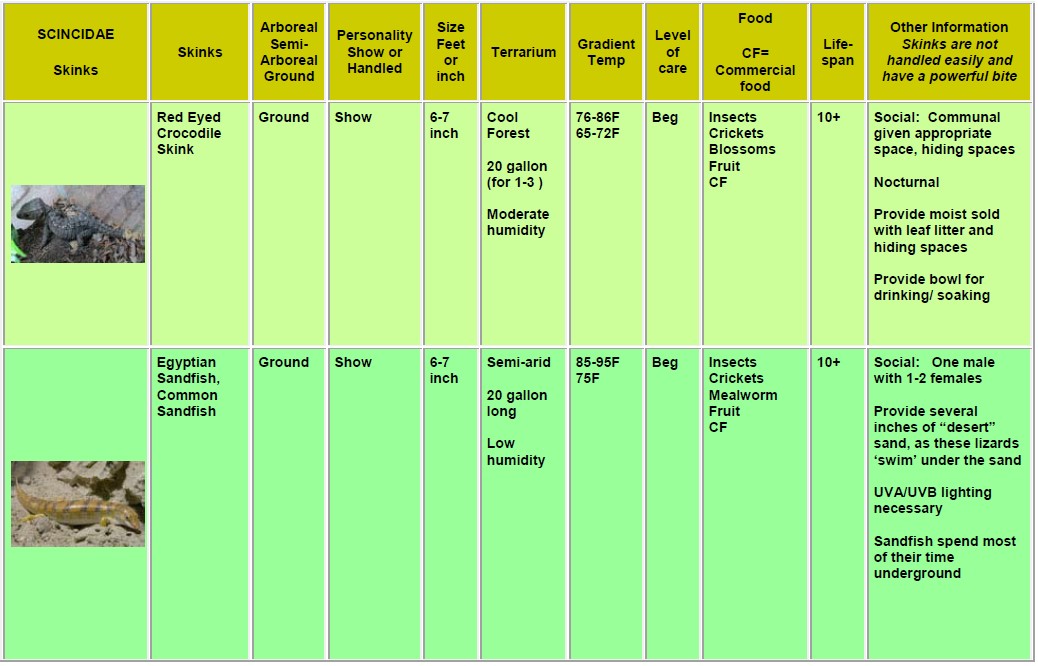Lizard Pet Guide
Pick the Perfect Pet to Fit your Lifestyle!
Research, Resources & Education
Our objective is to serve as a platform for education, through extensive research and a wide range of links to resources. We strive to provide comprehensive and accurate information, and we understand that like humans, animals too are unique individuals. Therefore, it is essential to acknowledge that the information we provide is general and may not apply to every animal of a particular breed or species.
Table of Contents
Find the Perfect Lizard
to Fit Your Lifestyle!
Guides to find a species of lizard including monitor, tegu, gecko, dragon, balisks, skinks and more. This guide includes information on common and family name, size, level of care (beginner, intermediate or advanced) and general lifespan.
Are these lizards better for show or can they be handled? Are they aboreal, burrow or prefer to stay on the ground? What type of food do they eat?
Lastly, what type of housing or terrarium, substrate and temperature are best for the specific breed? Should they be housed individually, in pairs or a community?
ABOUT Reptiles / Lizards
Reptiles
- Before considering any reptile, be aware that most reptiles require live food.
Some snakes will eat frozen mice that must be thawed, but don’t buy a snake depending on that.
Some reptiles eat daily, some several times a week and some several times a month.
Small children should always be supervised when handling any reptile.
Even the most docile corn snake can bite.
Some reptiles, such as the tegu, can be food aggressive.
In other words, they will bite the hand that feeds.
Wash your hands after handling any reptile.
Reptiles can be the source of Salmonella poisoning.
Know the size your pet will get to as an adult.
Zoos are overwhelmed and most will not take the lizard or snake who outgrows its environment.
Consider that your tegu that you bought at 2-4 inches will grow to an adult size of 2-4 feet or your reticulated python that at first fit into a 20-40 gallon tank and ate mice now requires his own ‘room’ and is eating rabbits and chickens as a snack.
Please consult with a reputable breeder or pet store that will give you information about the pet you pick.
DO YOUR RESEARCH and never buy any animal on a whim.
- As with most reptiles, look for ones that are captive born.
- Wild caught can harbor parasites and mites that can be difficult to get rid of.
Level of Care:
Beg = Beginner
Inter = Intermediate
Adv = Advanced.
Lizards
- Most lizards, especially as babies, are prone to metabolic bone disease.
- The majority of lizards require their food either be dusted with vitamin D3-calcium and or have their food source “gut-loaded” (fed) with vitamins.
- Most also require UVA/UVB spectrum lighting, especially if they are diurnal (awake during the day).
- Most species require a basking area about 10 degrees higher than the gradient temperatures listed in the chart.
- A gradient temperatures is a cool side and warm side of tank, as well as basking area.
- Lizards require a hiding place to feel safe, especially if housing several lizards together (never mix species without consulting someone familiar with the lizards).
- Most species unless, communal, do not tolerate other males.
- For most it is safe to have one male with several females depending of the size of the housing.
- Lizards can require a variety of environments, such as dry savannahs, woodlands, rainforest and desert that require different substrates (bedding).
As with all reptiles and small animals NEVER USE CEDAR or PINE!!!
Cedar can be fatal.
NO HOT ROCKS!
This can burn your reptile.
Lizard Care by Family
Gekkonidae: Geckos
- Geckos produce various sounds.
- Most geckos have fused eyelids that they lick to keep them clean.
- Most are nocturnal (awake at night) or diurnal (awake during the day) or both.
- The dirunal geckos are require UVA/UVB spectrum lighting.
- The majority of geckos have adhesive digits for climbing up vertical walls.
- There are many commercial foods (CF) available, as most geckos eat nectar, as well as insects.
Iguanidae: Anoles, Iguana, Swifts, Chuckwalla, Collared, Conehead, Curly-Tailed, Horne
- The lizards in the Iguana family can be arboreal (tree dwelling, semi-arboreal, terrestrial (ground) or semi-aquatic.
- They can eat a range of food such as greens, vegetables and insects.
- Lizards in this family can range from 6 inches to 6 feet.
Corytophanidae: Basilisks
- These are a more slender lizard with a crest.
- They are arboreal and semi-aquatic.
- They usually require large tanks to accommodate a large bowl of water for soaking and plants for climbing.
- They eat greens, vegetables and insects.
Agamidae: Agamas, Dragons and Uromastyx
- This family is either arboreal, stays on the ground, semi-arboreal or semi-aquatic.
- These eat a variety of insects, mealworms, vegetables and greens.
- They are some of the most interesting lizards that include the bearded dragon (one of my favorite) and the frilled lizard.
Chamaeleondae: Chameleons
- Chameleons are an arboreal lizard that has a long sticky tongue for catching insects.
- They have two digits that help them to latch on to branches.
- Their eyes can move in separate directions.
- They are beautiful and interesting with their changing color.
- Compared to most lizards they have a relatively short lifespan and can be very sensitive to their environment.
- Do not put water bowl in tank, as they may drown.
- Use a misting or water drip system, as they are drawn to moving water.
Varanidae: Monitor
- These are very large lizards that stay on the ground.
- For the most part they eat rodents, insects and some commercial food.
- This is a very strong reptile that has a very powerful bite.
- Due to their size and ornery disposition, they do not make a good pet for the average collector and are best left to more advanced owners with plenty of room for their size.
- They are also illegal in many states.
Scincidae; Skinks
- Skinks can be arboreal or ground dwellers often burrowing into the ground.
- They eat a variety of food, such as insects, fruits, vegetables and commercial food.
Teiidae: Tegus, Ameiva, Whiptails
- These range from arboreal to ground to burrowers.
- Keep in mind that if you plan to buy a lizard that likes to burrow, you may not see them a lot.
- Although Tegus can have a docile nature, they also get very large and can be food aggressive.
- The food in this family can range from rodents to greens.
Lacertidae: Wall Lizards
- These are slender lizards with forked tongues.
- These can be arboreal, semi-arboreal or ground.
- Most eat insects.
- These lizards are very quick.
Cordylidae: Plated and Girdled
- Plated lizards have armor and girdled lizards are generally spiny.
- They typically eat insects and are ground dwellers.
Auguidae: Alligator and Glass Lizards
- These lizards are generally ground dwellers. T
- hey generally eat rodents and insects.
- Some of these lizards have no limbs.
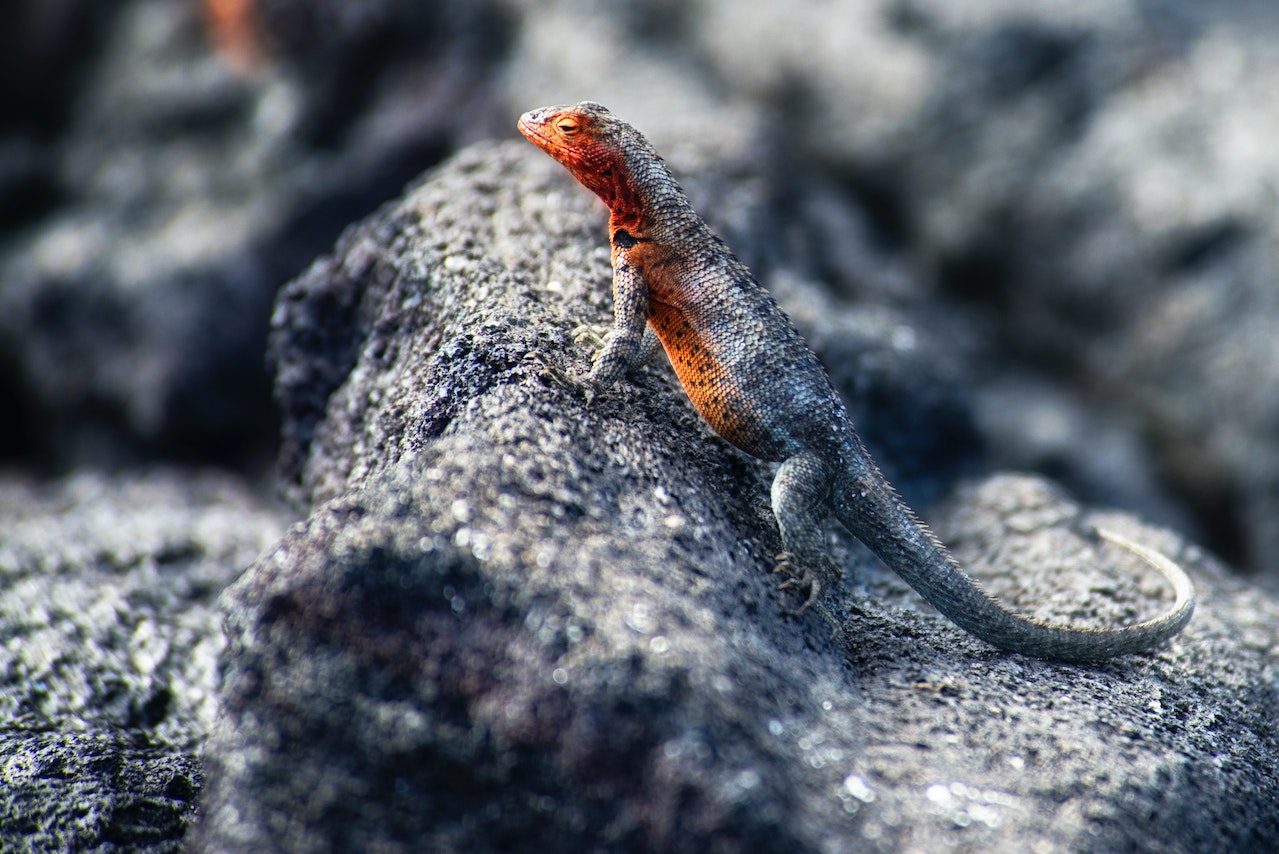
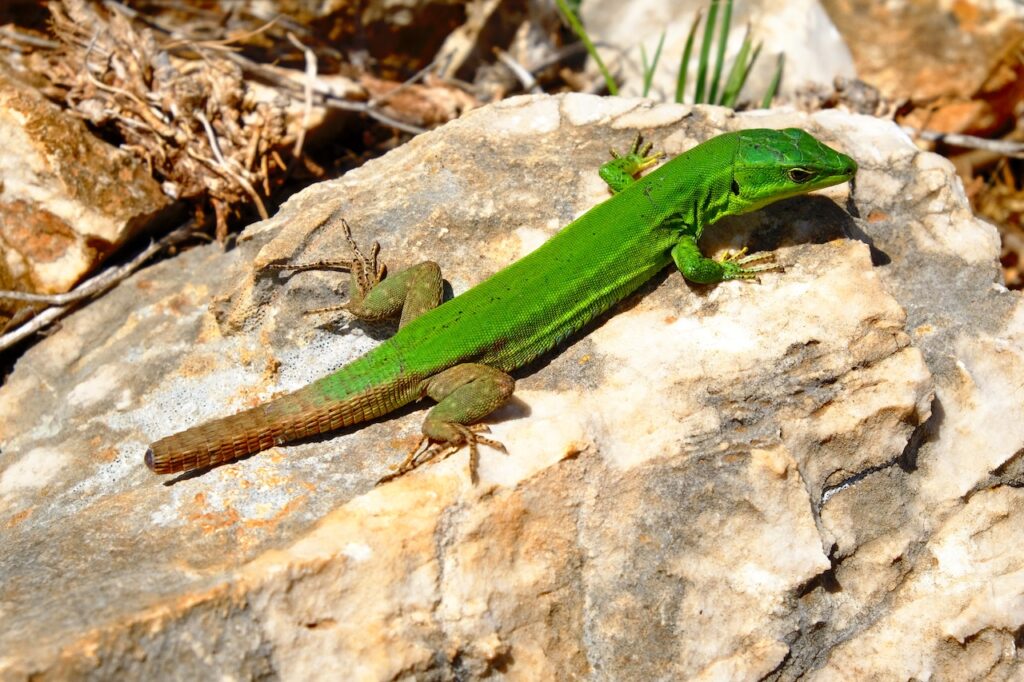
References
| Pet | Subject | Company / Link |
|---|---|---|
| Exotic Pets | What Is an Exotic Pet? | Spruce Pets |
| Insects | Care Sheets | Amateur Entomologists' Society |
| Reptiles | General Information | New England Herpetology Society – NEHS |
| Reptiles | Care Sheets | PETCO |
| Reptiles | Care Sheets | Reptastic |
| Reptiles | Care Sheets | Western New York Herpetology Society |
| Turtles | Care Sheets | Reptastic |
| Turtles | Care Sheets | Western New York Herpetology Society |
| Turtles | General Information | Wikipedia |



